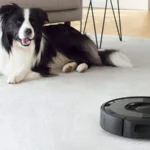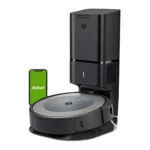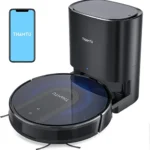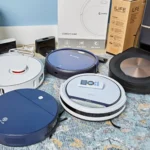When it comes to keeping our homes clean, the invention of the smart vacuum cleaner was a true game-changer. These automatic machines can navigate around furniture, reach tight corners, and pick up dirt and debris with ease. However, one area that still needs improvement is obstacle detection and avoidance. The last thing anyone wants is a vacuum cleaner getting stuck on a piece of furniture or damaging a precious item. But, what factors affect the performance of obstacle detection and avoidance in smart vacuum cleaners, and how can we ensure optimal performance? Let’s explore the current state of smart vacuum cleaners and the best practices for optimal obstacle detection and avoidance.
The Importance of Obstacle Detection and Avoidance
Obstacle detection and avoidance technology are essential features in modern smart vacuum cleaners. They allow the robot to navigate through the house, avoiding obstacles such as walls, furniture, and other objects with ease. The ability to detect and avoid obstacles efficiently affects not only the cleaning performance of the smart vacuum cleaner but also its durability and reliability. With the advances in sensor technology and artificial intelligence, robotic vacuum cleaners have greatly improved in terms of obstacle detection and avoidance. In this section, we will explore the importance of obstacle detection and avoidance in smart vacuum cleaners and the factors that affect their performance. The article will also provide some best practices that can help you optimize the performance of your smart vacuum cleaner.
To read more about the benefits of obstacle detection and avoidance for cleaning with smart vacuums, check out our article on the benefits of obstacle detection in smart vacuums.
Current State of Smart Vacuum Cleaners
Smart vacuum cleaners have come a long way since their introduction in 1997. Today, they are equipped with advanced technologies such as obstacle detection and avoidance systems. This technology enables the vacuums to navigate through your home while avoiding obstacles such as furniture, walls, and pets. Let’s take a look at the current state of smart vacuum cleaners in terms of their obstacle detection and avoidance capabilities.
Table 1: Comparison of Smart Vacuum Cleaners Obstacle Detection and Avoidance Features
| Brand | Model | Sensor Type | Mapping Capability | Obstacle Detection Performance | Obstacle Avoidance Performance |
|---|---|---|---|---|---|
| Xiaomi | Mi Robot Vacuum | Laser Distance Sensor (LDS) | Simultaneous Localization and Mapping (SLAM) | Excellent | Excellent |
| iRobot | Roomba s9+ | Smart Mapping technology with vSLAM | Yes | Good | Good |
| Ecovacs | Deebot Ozmo T8+ | Laser Distance Sensor (LDS) | TrueMapping technology | Fair | Fair |
| Shark | IQ Robot XL | Optical and proximity sensors | No | Poor | Poor |
As shown in Table 1, the current state of smart vacuum cleaners’ obstacle detection and avoidance systems varies by brand and model. Xiaomi’s Mi Robot Vacuum and iRobot’s Roomba s9+ are among the top performers, equipped with advanced sensor technologies and mapping capabilities. On the other hand, Shark’s IQ Robot XL shows poor obstacle detection and avoidance performance.
To summarize, the smart vacuum industry is rapidly advancing in terms of obstacle detection and avoidance technology. Consumers can expect more advanced systems and better performance in the future. For information on how obstacle detection systems work in vacuum cleaners, please refer to this article. If you want to integrate your obstacle detection and avoidance system into your smart home, refer to this article.
Factors Affecting Performance
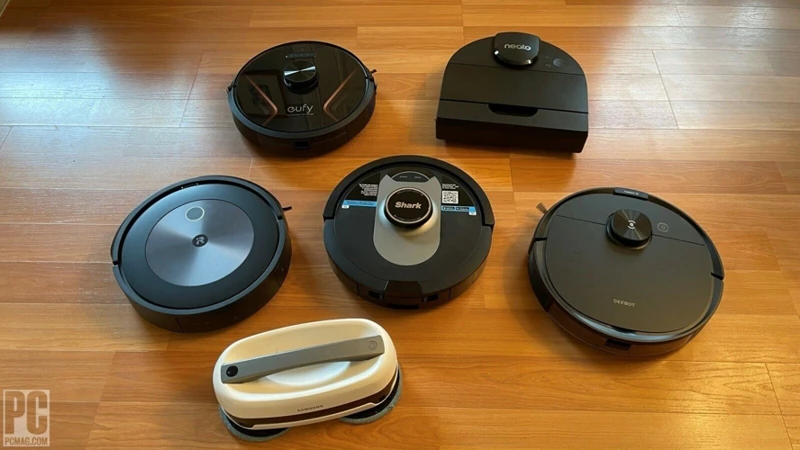
When it comes to smart vacuum cleaners, obstacle detection and avoidance is a critical function that impacts overall performance. The ability to navigate a room without getting stuck or missing areas is vital to delivering a thorough cleaning experience. However, several factors can affect the success of obstacle detection and avoidance in smart vacuum cleaners. Understanding these factors is essential to achieving optimal performance. In this section, we will explore the various aspects that influence obstacle detection and avoidance in smart vacuum cleaners, including sensor technology, environmental factors, and obstacle characteristics. By the end, you will have a clear understanding of the factors influencing performance, and how to improve it.
If you’re interested in learning about obstacle detection technology in smart vacuum cleaners, check out our previous article on Smart Vacuum Cleaner Obstacle Detection Technology.
Sensor Technology and Quality
The performance of obstacle detection and avoidance in smart vacuum cleaners greatly depends on the sensor technology and quality. Here are some factors that can impact the performance:
- Number of sensors: The more sensors a vacuum cleaner has, the better it can detect obstacles and navigate around them. Vacuums with multiple sensors are less likely to get stuck or run into obstacles.
- Sensor placement: Where the sensors are positioned on the vacuum cleaner can also impact performance. Sensors that are too far apart or too close together can affect the accuracy of obstacle detection.
- Type of sensors: There are different types of sensors used in smart vacuum cleaners such as infrared, ultrasound, and lasers. Each type has its strengths and weaknesses, and the quality of the sensor can affect the performance.
- Sensor range: The range of the sensor can impact how far in advance the vacuum cleaner can detect obstacles. A longer range sensor can provide more time for the vacuum cleaner to adjust its path and avoid a collision.
- Accuracy and precision: The accuracy and precision of the sensor are crucial for obstacle detection and avoidance. If the sensor is not accurate, the vacuum cleaner may not detect the obstacle, or it may detect a non-existent obstacle and change its path, wasting time and energy.
It is important to consider all of these sensor factors when selecting a smart vacuum cleaner. The quality of the sensors can greatly impact the performance, so it is worth investing in a product with high-quality sensors.
Environmental Factors
The performance of obstacle detection and avoidance in smart vacuum cleaners can also be greatly affected by environmental factors. Here are some of the environmental factors that can impact smart vacuum cleaner performance:
- Lighting: Adequate lighting is essential for smart vacuum cleaners to accurately detect and avoid obstacles. Poor lighting conditions can cause false readings or detection failures. To optimize performance, ensure that the cleaning area is well-lit and that the vacuum cleaner’s sensors are not blocked by bright light sources.
- Clutter: Cluttered environments can impact a smart vacuum cleaner’s ability to detect obstacles. For example, if there are many small objects on the floor such as toys, shoes, or wires, the vacuum may interpret them as obstacles and avoid them, thus missing areas of the floor that require cleaning. To minimize clutter, organize and tidy up the space before running the vacuum.
- Type of floor: Smart vacuum cleaners can perform differently on various types of flooring. For example, a vacuum may experience more difficulty detecting and avoiding obstacles on carpeted surfaces than on hardwood or tile floors. This is due to the different reflectivity and texture of the surfaces. It is important to choose a vacuum cleaner that is well-suited for the type of flooring in your home.
- Noise: Loud sounds can cause interference with smart vacuum cleaner sensors, leading to false positive detections. This means that the cleaner may avoid non-existent obstacles or detect objects that are not there. To minimize interference, make sure the area is as quiet as possible when running the vacuum cleaner.
To account for these environmental factors, it is important to take these aspects into consideration when selecting a smart vacuum cleaner. Additionally, it is important to clean the area before running the vacuum, optimize lighting conditions, and minimize sources of interference such as loud noises. By doing so, you can ensure optimal performance of your smart vacuum cleaner.
Obstacle Characteristics
When it comes to obstacle detection and avoidance in smart vacuum cleaners, understanding the characteristics of obstacles is essential in optimizing performance. Here are some key factors to consider:
- Shape: The shape of an obstacle can greatly impact a smart vacuum cleaner’s ability to detect and avoid it. For example, a round object like a vase may be easier to detect than a flat object like a book.
- Size: The size of an obstacle can also play a role in detection and avoidance. A larger obstacle is typically easier to detect, but it may be more difficult for the vacuum to navigate around it.
- Reflectivity: Obstacles with high reflectivity, such as mirrors or glass, may cause confusion for the sensors and affect performance.
- Texture: The texture of an obstacle’s surface can also impact detection and avoidance. A smooth, shiny surface may reflect sensors and make it more difficult to detect.
- Location: The location of obstacles, such as furniture or walls, can also impact performance. Corners, for example, may be difficult for a vacuum to navigate around.
It is important to consider these obstacle characteristics when selecting a smart vacuum cleaner and in testing and training obstacle avoidance. Proper setup and calibration of the vacuum’s sensors can help optimize performance even in challenging obstacle environments.
Best Practices for Optimal Performance
Ensuring optimal performance of your smart vacuum cleaner’s obstacle detection and avoidance systems is critical to maintaining its efficiency and prolonging its lifespan. To achieve this, there are several best practices that you can implement. These practices include regular maintenance, proper setup and calibration, obstacle avoidance testing and training, and selecting the right vacuum cleaner for your specific needs. By following these practices, you can maximize the effectiveness of your smart vacuum cleaner and ensure that it operates at peak performance for years to come.
Regular Maintenance
Regular maintenance is an essential aspect that plays a vital role in ensuring the optimal performance of smart vacuum cleaners. Neglecting timely maintenance and cleaning can cause various problems, diminishing the efficiency and lifespan of the device. Here are some examples of the most crucial regular maintenance practices that help avoid such issues:
| Maintenance Practices | Description |
|---|---|
| Emptying the Dustbin | As smart vacuum cleaners work continuously, it’s crucial to maintain and empty the dustbin regularly. This prevents any clogs, leaving your vacuum cleaner ready to tackle any cleaning task. |
| Filter Replacement | Frequently replacing filters is essential, particularly if you have pets or allergy sufferers. A blocked filter can drastically reduce the suction power, making the vacuum cleaner less efficient. |
| Brush Roll Replacement | If you notice the brush rolls have started shedding, it’s time to replace them. Replacing the brush rolls helps maintain the vacuum’s suction power and remove any tangled fibers. |
| Battery Management | Smart vacuums rely on rechargeable batteries to function. Regularly checking the battery and charging it ensures that your device is always ready for work. |
| Maintenance of Sensors | Sensors play a critical role in the obstacle detection and avoidance function of smart vacuums. Regular cleaning of the sensors ensures their accuracy and efficiency in detecting any obstacles or steps in the device’s path. |
By following these maintenance practices, you can ensure that your smart vacuum cleaner stays in excellent condition, resulting in optimal performance and longevity. Remember that regular maintenance is crucial for any electronic device, and by neglecting it, you compromise its efficiency and efficiency in the long run.
Proper Setup and Calibration
Proper setup and calibration are crucial to ensuring the optimal performance of obstacle detection and avoidance in smart vacuum cleaners. During the setup process, it is important to carefully read and follow the manufacturer’s instructions, which may vary based on the model of the vacuum cleaner.
Table:
| Setup steps | Explanation |
|---|---|
| Positioning the Charging Dock | The charging dock should be placed in an open area with a clear line of sight for the vacuum cleaner to easily navigate to it. |
| Cleaning the Floor | Before the first use, it is recommended to thoroughly clean the floors to reduce the likelihood of the vacuum cleaner getting stuck on debris or encountering obstacles. |
| Activating Sensors | Ensure that all sensors are activated and functioning properly. Some models may have the ability to turn off certain sensors, so be sure to check the user manual for specific instructions. |
Calibration is the process of fine-tuning the vacuum cleaner’s sensors and parameters to ensure optimal performance. Calibration may involve adjusting the sensitivity of the sensors or setting up virtual barriers to prevent the vacuum cleaner from entering certain areas.
Calibration procedures vary between different models of smart vacuum cleaners, but typically involve following a series of steps outlined in the user manual, which may include:
- Activating the calibration mode
- Moving the vacuum cleaner to specific points to train the sensors
- Adjusting the sensor sensitivity
- Setting up virtual barriers
Following proper setup and calibration procedures can help enhance the performance of obstacle detection and avoidance in smart vacuum cleaners, reducing the likelihood of the vacuum cleaner getting stuck or damaging itself or surrounding objects. It is important to periodically re-calibrate the sensors to ensure optimal performance.
Obstacle Avoidance Testing and Training
When it comes to optimizing the performance of smart vacuum cleaners, regular obstacle avoidance testing and training is essential. Obstacle Avoidance Testing can help determine the accuracy of the sensors and the overall performance of the vacuum cleaner. Similarly, regular Obstacle Avoidance Training improves the efficiency of the cleaner and ensures that it avoids obstacles with more precision and speed.
To conduct Obstacle Avoidance Testing, set up a course with different obstacles, such as chairs or furniture. The vacuum cleaner should be turned on and placed in the course for testing. It is important to record the results of the test to understand which areas need improvement. Repeat the process periodically to ensure that the vacuum cleaner is performing optimally.
On the other hand, Obstacle Avoidance Training involves teaching the vacuum cleaner how to avoid obstacles more efficiently. During training, the vacuum cleaner is programmed to navigate around obstacles using its sensors. It is important to customize the training module to suit the layout and obstacles of the room in which the vacuum cleaner will be used. This will help the vacuum cleaner better understand its surroundings and avoid collisions with obstacles.
To ensure optimal performance, Obstacle Avoidance Training should be conducted regularly, especially when the layout or obstacles of the room change. This will prevent the vacuum cleaner from being caught off guard and colliding with obstacles.
The following are some of the benefits of conducting regular Obstacle Avoidance Testing and Training:
| Benefits of Obstacle Avoidance Testing and Training |
|---|
| Improved Accuracy of Sensors |
| Better Understanding of Room Layout and Obstacles |
| Increased Efficiency of the Vacuum Cleaner |
| Prevention of Accidents and Damage to Furniture |
By regularly conducting Obstacle Avoidance Testing and Training, you can be sure that your smart vacuum cleaner will operate at maximum efficiency and avoid damage to your furniture or other obstacles in your home.
Choosing the Right Vacuum Cleaner
When it comes to choosing the right vacuum cleaner for optimal obstacle detection and avoidance performance, there are a few key factors to consider. Here are some important points to keep in mind:
- Brand Reputation: Look for well-known and reputable brands that have a track record of producing high-quality smart vacuum cleaners. Research online reviews and ratings to see which brands are consistently ranked as the best in terms of obstacle detection and avoidance performance.
- Sensor Technology: As mentioned earlier, sensor technology is one of the most important factors in determining a smart vacuum cleaner’s obstacle detection and avoidance capabilities. Look for models with high-quality sensors that are designed to detect obstacles of varying sizes and shapes.
- Obstacle Avoidance Features: Some smart vacuum cleaners come with additional features specifically aimed at enhancing their obstacle detection and avoidance capabilities. For example, some models have edge detection sensors that help prevent the vacuum from falling down stairs or other drop-offs.
- Battery Life: A vacuum cleaner’s battery life is important to consider, especially if you have a large home or need to clean multiple rooms in a single session. Look for models with long-lasting batteries that can handle extended cleaning sessions without needing to be recharged.
- Price: Of course, price is always a consideration when buying any type of appliance. While it’s tempting to opt for a cheaper model, keep in mind that they may not have the same level of obstacle detection and avoidance technology as more expensive models. Make sure to weigh the cost vs. performance benefits when making your decision.
By taking these factors into account, you can increase the chances of selecting a smart vacuum cleaner that effectively detects and avoids obstacles, resulting in a cleaner and more efficient home cleaning experience.
Conclusion
After analyzing the factors affecting the performance of obstacle detection and avoidance in smart vacuum cleaners, it is now clear that quality sensor technology, environmental factors, and obstacle characteristics are crucial in ensuring optimal performance. Additionally, best practices such as regular maintenance, proper setup and calibration, obstacle avoidance testing and training, and selecting the right vacuum cleaner are essential in maintaining the equipment’s efficiency.
It is important to note that smart vacuum cleaners have come a long way in terms of technology, making them more precise and efficient in cleaning. However, as with any technology, they are not perfect and have their limitations, which we have discussed in this article.
In conclusion, to ensure that smart vacuum cleaners perform at their best, it is crucial to pay attention to the factors discussed in this piece, implement the best practices, and remain vigilant in monitoring their performance. With proper care and attention, smart vacuum cleaners can enhance the quality of life and make cleaning tasks significantly easier.
Frequently Asked Questions
What is the purpose of obstacle detection and avoidance in smart vacuum cleaners?
The purpose of obstacle detection and avoidance in smart vacuum cleaners is to prevent the vacuum cleaner from getting stuck or damaging obstacles in its path, as well as improving the overall efficiency and effectiveness of the cleaning process.
What sensor technology is typically used in smart vacuum cleaners?
Smart vacuum cleaners typically use a combination of infrared sensors, laser sensors, and/or cameras to detect obstacles and avoid them.
What are some common environmental factors that can affect the performance of obstacle detection and avoidance?
Some common environmental factors include lighting conditions, the presence of dust or debris, and the surface type (e.g. carpet, hardwood, tile, etc.).
How do obstacle characteristics affect the performance of smart vacuum cleaners?
Obstacle characteristics such as size, shape, and reflectivity can affect how easily the obstacle is detected and avoided by the vacuum cleaner.
What can I do to ensure optimal performance of my smart vacuum cleaner’s obstacle detection and avoidance?
Regular maintenance, proper setup and calibration, obstacle avoidance testing and training, and choosing the right vacuum cleaner are all important factors in ensuring optimal performance.
How often should I perform maintenance on my smart vacuum cleaner?
It’s recommended to perform maintenance on your smart vacuum cleaner at least once every three months, or more often if you use it frequently.
What are some signs that my smart vacuum cleaner may need calibration?
If your vacuum cleaner is consistently missing obstacles or getting stuck, or if it appears to be detecting obstacles that aren’t actually present, it may need calibration.
Can I use my smart vacuum cleaner on both carpet and hardwood floors?
Yes, many smart vacuum cleaners are designed to be used on a variety of surfaces.
How can I test and train my smart vacuum cleaner’s obstacle avoidance capabilities?
You can do this by placing various obstacles of different shapes and sizes in the vacuum cleaner’s path and observing how it reacts. You can also try adjusting the vacuum cleaner’s sensitivity to obstacles and observing the results.
What should I look for when choosing a smart vacuum cleaner with effective obstacle detection and avoidance?
You should look for a vacuum cleaner with high-quality sensor technology, good reviews for obstacle avoidance capabilities, and potentially features like mapping or virtual walls for more precise cleaning.



